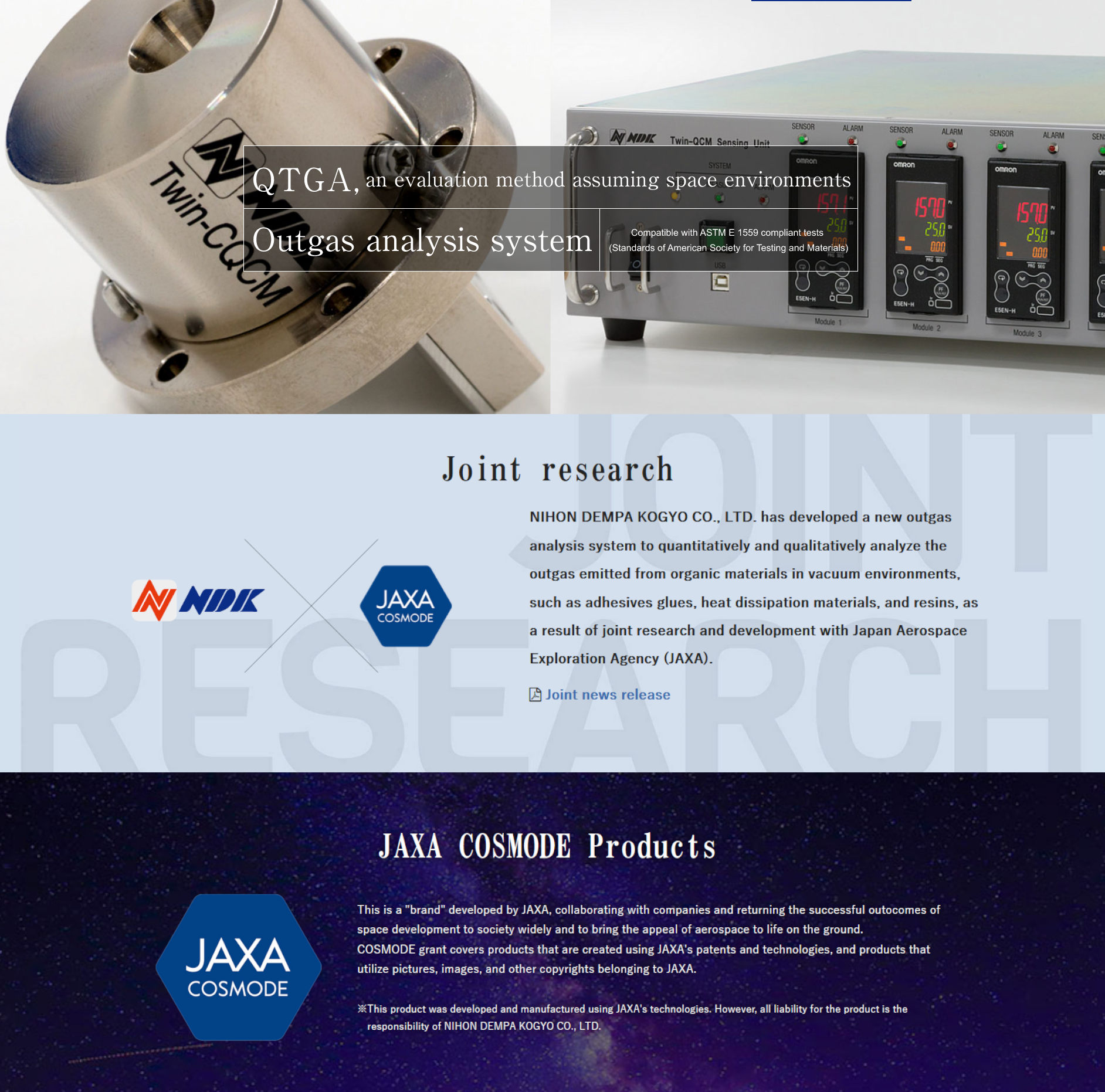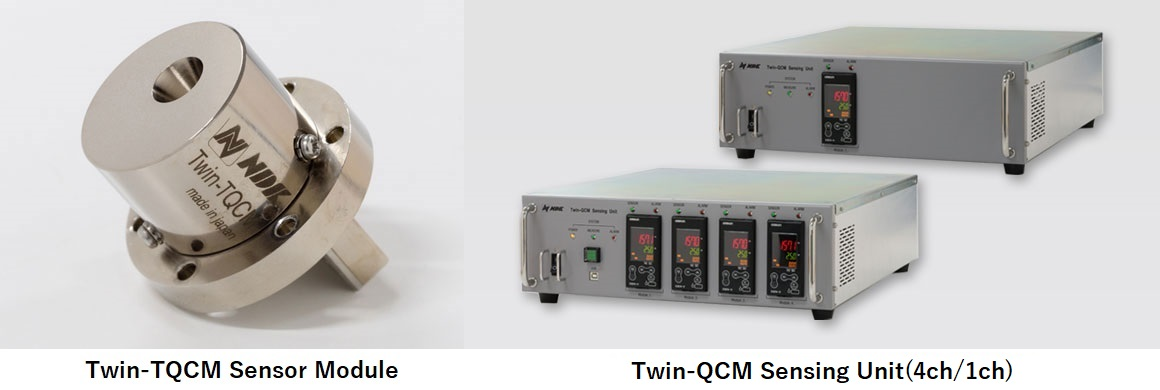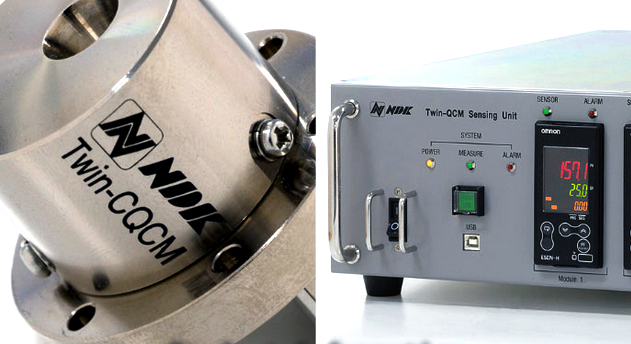
Nihon Dempa Kogyo (NDK) was established in 1948 with a founding philosophy of "contributing to the prosperity of society and world peace through our service to customers."
This philosophy is founded on a belief that providing reliable, high-quality and attractive products at an appropriate price can be useful to customers and can, by extension, help society prosper.
Moreover, the founder believed that enhancing communication among people through accurate information would promote international understanding as a cornerstone of lasting peace.

NDK EUROPE
11, Bd. Archimède
Immeuble Archimède
77420 Champs sur Marne
FRANCE
+33 1 60 95 00 00
www.ndk.com/en/products
RECONNAISSANCES
ISO/IEC 17025:2017 JIS Q 9100:2016 ISO 9001:2015
ISO 13485:2016 IATF 16949:2016 JIS 14001:2015
ISO 14001:2015
Joint research
NIHON DEMPA KOGYO CO., LTD. has developed a new outgas analysis system to quantitatively and qualitatively analyze the outgas emitted from organic materials in vacuum environments, such as adhesives glues, heat dissipation materials, and resins, as a result of joint research and development with Japan Aerospace Exploration Agency (JAXA).
JAXA COSMODE Products
This is a "brand" developed by JAXA, collaborating with companies and returning the successful outocomes of space development to society widely and to bring the appeal of aerospace to life on the ground.
COSMODE grant covers products that are created using JAXA's patents and technologies, and products that utilize pictures, images, and other copyrights belonging to JAXA.
※This product was developed and manufactured using JAXA's technologies. However, all liability for the product is the responsibility of NIHON DEMPA KOGYO CO., LTD.

CLIENTS / MARCHÉS
Space
Quality control requires testing in compliance with international standards such as ASTM standards.
Twin-TQCM : analytical systems compatible with ASTM E 1559 compliant tests (Standards of American Society for Testing and Materials), and are utilized for space materials evaluations. Outgas separation temperature -196℃ to +125℃ allows analysis of outgasses separated.
Twin-CQCM : analytical system that performs temperature control electrically by means of a peltier device. This system is ideal for material and environmental evaluations. Outgassing separation temperature -80℃ to +125℃ allows analysis of outgassing.
Industry
On electronic and optical equipment, various problems occur due to the influence of siloxane and other outgasses.
Therefore, it is important to select materials based on accurate measurement results so that outgas emission from organic materials such as adhesives glues, heat dissipation materials, and resins can be suppressed as much as possible.
GC/MS has conventionally been used as a material analysis method both in the industrialand academic field, but measurements using QTGA method have the following advantages.
* Quantification of actual amount of outgas adsorbed.
* Real-time measurement of outgas emission.
* No sample size limit, enabling outgas measurement in the final product state.
* Gas monitoring in vacuum environment.
DOMAINE D’EXCELLENCE
Outgas Analysis System
Gas Components emitted from organic materials and packaging materials that make up products, such as plastics and adhesives, are called "outgasses (volatile gases)".
These outgasses cause contamination problems in outer space, cause product failures, and pose concerns about the impact on humans. Therefore, it is important to accurately measure outgassing, select materials with less outgassing, and recognize the long-term trend of outgassing.
Measurement principle
Crystal devices are electronic components that control and select frequencies with high accuracy and stability. When a substance attaches to the electrode of the crystal sensor surface, a frequency drop corresponding to the mass adsorbed appears(=Mass load effect), so it is also used as a sensor and is generally called as QCM sensor.
Additionally, the mass load effect using the QCM sensor is called as QCM method. QTGA method measures outgas amount adsorbed by the QCM method and identifies the substance from the adsorption/desorption characteristics by controlling the sensor temperature. In the field of outgas measurement from materials for space equipment, this QTGA method has been used for a long time.
COMPÉTENCES ET PRODUITS
QTGA, an evaluation method assuming space enviroments
Measurement is possible without gasifying the measurement sample.
* Without destroying the sample, it is possible to collect it as it is.
* No sample size restrictions provides outgas measurement with the final product state.
Outgas measurement can be performed in real time over a long period of time.
* Measuring over a long period of time with up to four modules, it is possible to identify the outgas emission point and the time of occurrence.
* The measurement interval can be selected from among 1, 10, 30, 60, 600, and 3600 seconds.
*The measurement data is divided and saved every week. This can prevent the enlargement of the data.
Twin C-QCM (Cryogenic)
Outgas analysis systems are analytical systems compatible with ASTM E 1559 compliant tests (Standards of American Society for Testing and Materials), and are utilized for space materials evaluations.
* Measurements can be made at extremely low temperatures (-196℃ to +125℃) and high vacuum (10-4Pa or less) suitable for space environments.
* The desorption gas emitted from the sample can be measured with high accuracy with up to four sensor modules .
Twin T-QCM (Thermoelectric)
The system does not need liquid nitrogen. The simple system provides you evaluation results, and is the best suited for material and environmental evaluations.
* Running cost is just electricity cost only.
* Measurement at low temperatures (-80℃ to +125℃) and high vacuum (10-4Pa or less).
* There are two types, such as the most suitable type for evaluation in a large vacuum chamber that can measure the desorption gas emitted from a sample with up to four sensor modules, and the most suitable type for evaluation in a small vacuum chamber that measures with one sensor module.
Controllers (provided with application software for PC)
* 1 channel
* 4 channels
